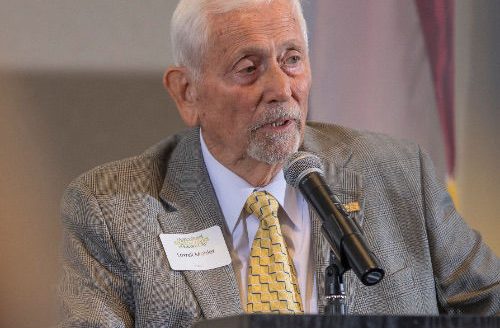UW bulletin details pre- and post-fire soils research at Rogers Research Site
A new University of Wyoming bulletin contributes to the growing knowledge base of ecosystem recovery following high-intensity forest fires.
The publication details an ongoing study examining ecological impacts of the 2012 Arapaho Fire, which burned nearly 100,000 acres in the north Laramie Mountains of southeast Wyoming, including the UW-owned Rogers Research Site.
Preliminary results indicate that marked soil chemical and biotic changes occurred at the 320-acre site following the fire. They are presented in RRS Bulletin 7, Pre- and post-fire soil comparisons, Rogers Research Site, north Laramie Mountains, Wyoming.
“As wildfires are becoming more frequent across the U.S., it warrants solid knowledge about the consequences of these events for the recovery of ecosystems,” said co-author Linda van Diepen, an assistant professor of soil microbial ecology in the Department of Ecosystem Science and Management within the College of Agriculture and Natural Resources.
“Through comparison of soil conditions pre- and post-fire, we are better able to understand the impacts of high-severity fires such as the Arapaho, which, in turn, helps us in measuring the recovery of the ecosystem back to its original state,” van Diepen said.
In spring 2012, UW graduate student Claire Wilkin and her faculty co-advisor, Professor Steve Williams, established eight monitoring plots at RRS to document soils, plant distribution, water sources, topographic features and belowground biota.
Fortuitously, they collected soil samples within the plots just weeks prior to the lightning-caused Arapaho Fire, which started during an extreme drought. The fire burned across RRS and neighboring lands in early July, reaching temperatures estimated at nearly 900 degrees F.
With this baseline information in hand, bulletin co-authors Wilkin and Williams refocused their study on pre- and post-fire soil comparisons.
“As such, understanding how fire impacts important nutrients in the soil is paramount to understanding ponderosa pine ecosystems, including the one at RRS and surrounding lands,” Williams said.
After observing noticeable changes in soil chemical and biotic changes, Williams and Wilkin became interested in exploring the subsequent effect these changes might have on the soil microbial communities, which will be detailed in the nearly completed RRS Bulletin 8.
Since Wilkin’s graduation and Williams’ retirement, a team of UW faculty and students led by van Diepen have continued the soil studies and related post-fire ponderosa pine research at RRS.
“The research includes soil chemistry and biology, including carbon and nitrogen budgets, and microbial community composition, which are important factors determining nutrient availability to the recovering vegetation,” van Diepen said. “We are also studying the recovery of ponderosa pine, grasses, forbs and shrubs, in addition to measuring how invasive plants are responding to the fire.”
The 320-acre RRS was bequeathed to UW in 2002 by Col. William C. Rogers, who purchased the land shortly after retiring from the U.S. Army. He stated in his will research at the site should focus, in part, on the improvement of forestry and wildlife resources.
“Understanding the responses of soil to wildfire and how it is related to vegetation growth after fire will aid land managers in determining priorities for enhancing forest recovery to provide habitat for wildlife,” van Diepen said.
Other authors of Bulletin 7 include Larry Munn, professor emeritus in the Department of Ecosystem Science and Management; Michael Urynowicz, professor in the Department of Civil and Architectural Engineering; and Robert Waggener, editor for the Wyoming Agricultural Experiment Station.
WAES and one of its research stations, the James C. Hageman Sustainable Agriculture Research and Extension Center near Lingle, manage RRS. They are within the College of Agriculture and Natural Resources.
The first seven bulletins detailing research, extension, teaching and other activities at RRS are posted on the SAREC website at bit.ly/RogersResearchSite.

